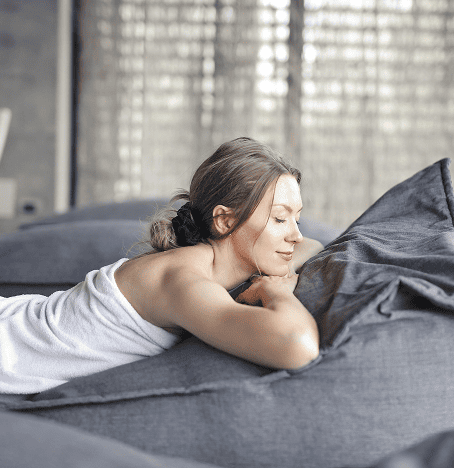Amazing Benefits of Safflower Oil
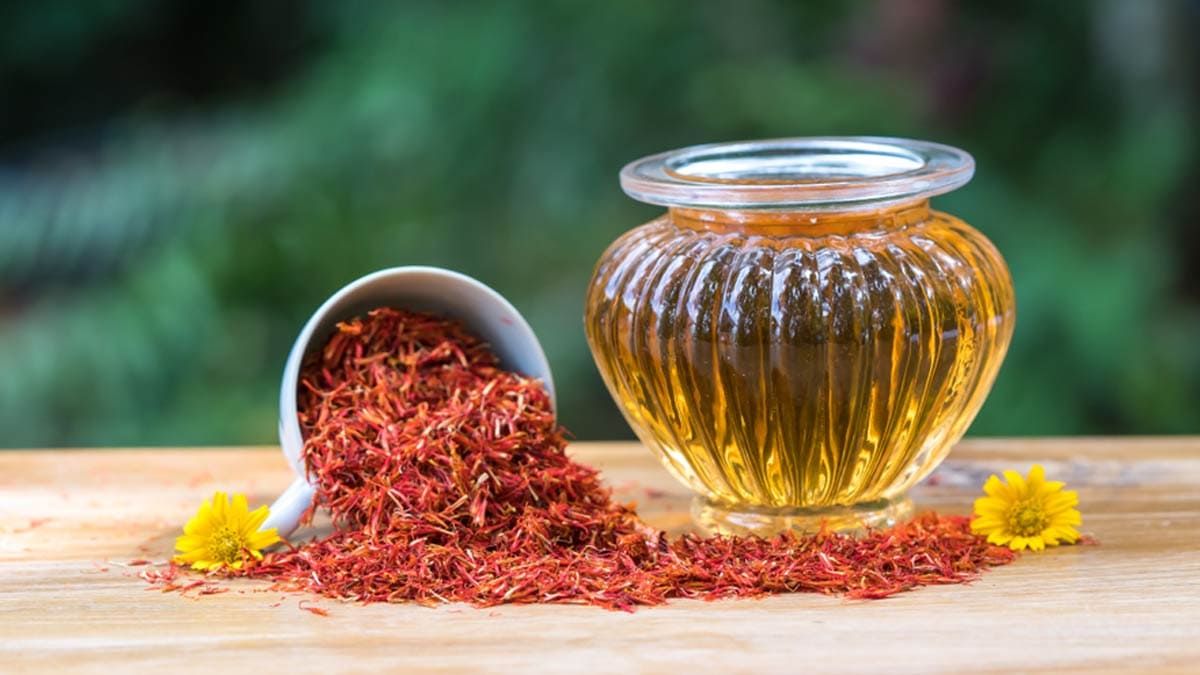
Safflower oil offers numerous health benefits and versatile uses,derived from safflower's (Carthamus tinctorius) seeds, it has gained much attention in recent years. This golden-hued oil offers benefits in the kitchen as well as the beauty kit, thanks to its content of essential fatty acids, antioxidants and other nutrients. Here are the top benefits of safflower oil and what makes it a worthy daily staple.
1.Promotes Heart Health
One of the most well-known health benefits of safflower oil is its potential to promote heart health. Safflower oil is high in monounsaturated and polyunsaturated fat, primarily linoleic acid (an omega-6 fatty acid). These “good”fatsreducebad cholesterol and increase good cholesterol levels. It lowers the risk of atheromatosis, myocardial infarction, and stroke due to the elimination of cholesterol balance. Its anti-inflammatory action helps blood vessels expand healthy and lowers blood pressure.
2.Supports Weight Management
Safflower oil can support fat loss and higher quality body composition. According to scientific studies, the linoleic acid found in safflower oil aids in the breakdown of excess body fat specifically in the belly area, which is associated with an increased risk for metabolic-based illnesses. Of then how safflower oil makes the body more sensitive to insulin, so that it controls blood sugar more efficiently and does not hoard fat. Safflower oil can be part of a healthy diet.
3.Boosts Skin Health
Safflower oil is very high in vitamin E, a potent antioxidant that helps to protect the skin from damage from free radicals caused by environmental factors from pollution and UV rays. An excellent moisturizer for all skin types, including oily and acne-prone, thanks to the light texture of the oil. It works to regulate sebum production, unclog pores and reduce inflammation, making it effective in treating acne and eczema. The world has seen countless retinols and other synthetically concocted anti-aging agents, but thankfully there is safflower oil that supports collagen production, contributing to skin suppleness and reducing fine lines and deep wrinkles.
4.Strengthens Hair
Safflower oil is not justgood for skin, but also for hair. Rich in oleic acid which helps nourish and condition the scalp, avoiding dryness and flakiness. Safflower oil strengthens hair follicles andprevents breakage and improves hair growth when used regularly. It also provides shine and softness to hair, making it a natural substitute for commercial hair treatments.
5.Anti-Inflammatory Properties
We know that chronic inflammation—of which the two above are symptoms and forms—is a root cause of many leading health problems, from arthritis and diabetes to heart disease. It has been shown that safflower oil reduces the inflammatory process using its bioactive compounds. For example, its omega-6 fatty acids can alleviate joint pain and stiffness in people with arthritis. Including safflower oil in your diet can be a great way for your body to fight inflammation and stay healthy overall.
6.Rich in Antioxidants
There are antioxidants in all fats, one of the most important being vitamin E, as well as phenoliccompounds that also promote health. These compounds neutralize free radicals, unstable molecules that pose a threat to cells and are implicated in aging and chronic diseases. Safflower oil supports immune function and reduces the risk of cancer and neurodegenerative diseases by protecting cells from oxidative stress.
Generally speaking, safflower oil is an excellent cooking oil full of nutrients and health benefits.Whether it is the promotion of heart health, support of weight management, or improvement of skin and hair quality, its uses are broad and profound. Safflower oil is one of those natural and powerful tools for cooking and skin care. Like any food or skin care product, moderation is key, and it’s also best to check with a health professional before making big changes to your routine.So enjoy the benefits of safflower oil in your life.
 Disclaimer:
Disclaimer:
The content provided on our blog site traverses numerous categories, offering readers valuable and practical information. Readers can use the editorial team’s research and data to gain more insights into their topics of interest. However, they are requested not to treat the articles as conclusive. The website team cannot be held responsible for differences in data or inaccuracies found across other platforms. Please also note that the site might also miss out on various schemes and offers available that the readers may find more beneficial than the ones we cover.
Related Websites
-
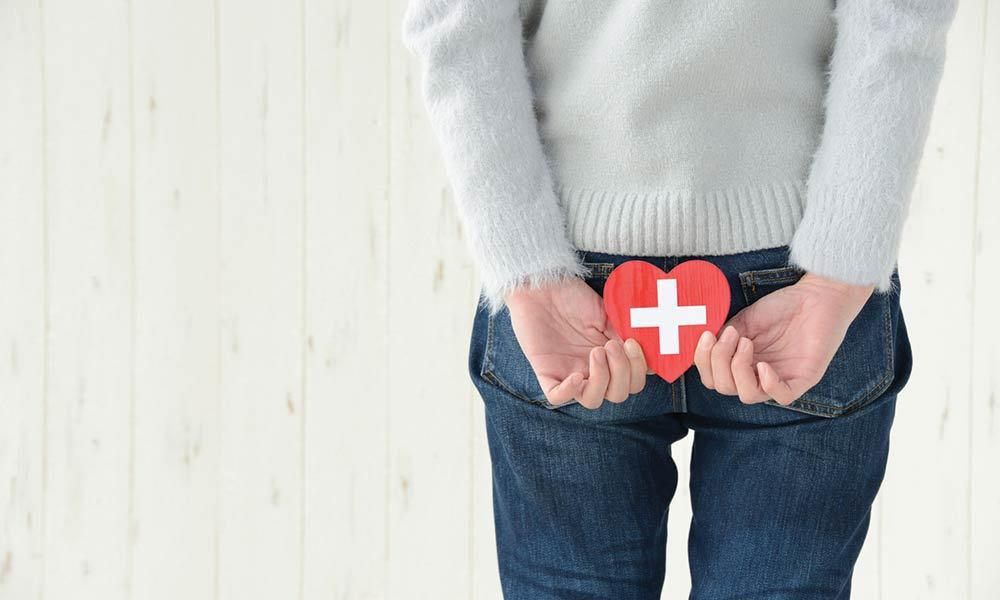 Health & Wellness
Health & WellnessAgony of External Hemorrhoids: Understanding the Pain
External hemorrhoids are among the most common conditions you will have and can bring a great deal of discomfort to the patient. These swollen vessels right under the surface skin at the anus can cause a range of symptoms that affect your day-to-day life, causing pain while sitting and issues with walking.1.Itching or Irritation that Doesn’t StopPersistent itching and irritation around the anal area is one of the most common and annoying symptoms of external hemorrhoids. The itching can be severe and unremitting, and it may be made worse by a bowel movement.This itch-scratch reflex usually makes the itch worse and may lead to broken skin, which can become infected. Itchiness can be extremely irritating, so much so that concentrating on work or daily tasks can be frustrating, impacting patient's quality of life.2.Pain and TendernessExternal hemorrhoids are that especially painful, especially when one of them becomes thrombosed — a blood clot forms within the hemorrhoid. (This condition appears as a firm, painful lump near the anus.) The pain is acute and pounding, meaning it is difficult to sit, stand or move about comfortably. Even mild pressure, like sitting on a chair, can worsen the pain and make it a constant irritant.3.Swelling and InflammationSwelling is the main characteristic of external hemorrhoids. The inflamed region might appear puffy or swollen, resulting in a sensation of fullness or pressure in the anal region.This swelling can hinder proper cleaning of the area, raising the risk of fresh irritation, and even infection. That inflammation can also create a feeling of heaviness or discomfort, making it difficult to get relief.4.Bleeding at the Time of BowelMovementsExternal hemorrhoids bleed less often than those inside the body, but they can hemorrhage, especially if they are inflamed or scratched. The sight of blood on toilet paper or in the toilet bowl can be shocking and only adds to the anxiety and discomfort of the condition.Bleeding can then lead to more irritation and pain, perpetuating the cycle.5.Difficulty with HygieneExternal hemorrhoids pose a challenge for hygiene, as when they occur they are located where cleanliness is difficult. Having swollen tissue that makes it difficult to nicely wipe the anal area after bowel movements, or painful. That results in more irritation, itching and an increased risk for infection. Struggled with hygiene issues, which can lead to feelings of embarrassment, irritability and poor self-esteem, bad social behaviour.6.Impact on Daily ActivitiesExternal hemorrhoids pain can be debilitating and affect daily activities. Even basic tasks such as sitting, walking, or just driving can become painful and difficult. The continuous discomfort can cause tiredness that can lower focus and even performance at work. Moreover, the pain may disrupt sleep — contributing to exhaustion and diminished quality of life.7.Emotional and Psychological EffectsEven though there is another option, the need to cope with the pain and discomfort of external hemorrhoids and the mental and psychological state of well-being can be taxing. Chronic itch, pain, and toileting or hygiene difficulty can result in embarrassment, frustration, and even depression. It can also impact intimate relationships, leading to more emotional turmoil. Please look up the information and talk to your doctor about what, if any, intervention might be indicated based on your personal history and severity of disease as the chronicity of pain can lead one to become hopeless, making it important to reach out for both medical and emotional support.In conclusion, suffering from external hemorrhoids can cause various painful and uncomfortable physical and psychological symptoms. From constant itching and pain to challenges with hygiene and activities of daily living, the burden of this condition can be considerable. First step to getting treatment to help discomfort from external hemorrhoids is understanding the discomfort caused. External hemorrhoids are best left to a health-care provider who can properly diagnose and create a treatment plan. However with adequate care, the pain and discomfort can be controlled along with the quality of life. -
 Travel
TravelSteps to Get Discounted Airfares for Seniors
Regardless of age, traveling is something that many people love and for seniors, it can often open up new territory to explore, revisit their favorite place, or get the opportunity to see the world at a relaxed pace. But sometimes the cost of airfare becomes an obstacle to those travel dreams. Luckily, there are plenty of methods seniors can take advantage of to save money on airfares, so their travels can be enjoyablewhile still being easy on the wallet. Here are very useful tips toenable you save more from your next flight.1.Become a Member of AARP and Other GroupsJoining associations, for example, AARP (American Association of Retired Persons) is one of thesimplest ways for seniors to receive concessions. There are a number of travel benefits with AARP, including exclusive airfare offers made possible through partnerships with airlines.A nominal fee typically comes with membership, but the savings on flights morethan offsets the expense. Watch AARP’s travel page for flashsales and otherseniors-only offers.2.Use Airline LoyaltyProgramsMost airlines have loyalty programs that compensate frequent flying travelerswith points, miles,or cash discounts. As a senior, joining these programs and earning points from some occasional trips can help one save a good amount of money overtime. Some airlines also havespecial senior discounts, so it’s worth reviewing the fine print of your favorite carrier’s loyalty program forage-specific advantages.3.Book at the Right TimeAirfare is allabout timing. In general the best fares become available middle of the week (Tues or Weds) and several months ahead oftravel. During thesetimes, airlines often release promotional fares that seniors can capitalize on. Do not book during busy travel periods orholidays when rates can be sky high. Being flexible with your travel dates can alsounlock cheaper options.4.Use Travel Agencies, Websites that Specializein Senior DiscountsThere are plenty of travel agents and online sites which caterspecifically to offering seniors discounted prices. SeniorDiscounts.comand similar web sites have a great deal of information.Travelzoocan be excellent resources for deals. These platforms pull offers from different airlines,by doing this you can compare prices and choose the fittest option without going through many different airline pages.5.ExploreAlternativeAirlines and RoutesBudget airlinesand smaller carriers often aren't the first choice, but often offer the best value for money. Donot ignore these options if they service your destination.And, comparing other airports or layover pathscan yield huge savings as well. Occasionally a slightly lengthier trip can yielda considerably cheaper fare.6.Get a Dealand Ask for DiscountsFeel freeto contact airlines directly and ask about other possible senior discounts. Some airlines advertise their senior rates front and center, but others may have them available only on request. Be courteous and persistent; a single phone call might getyou a substantial discount that’s notmentioned in plain view.7.Utilize Companion FaresSenior travelers can find low-cost tickets by keying in specific keywords (such as oneof the benefits airline offer—companion tickets) in the airline website's search bar. If you are eligible for a companion fare, the price of your trip can effectively be cut inhalf. Look for such promotions that cango a long way in working wonder.To sum up, although airfare can discourage travel, older adults have a number of options to try to getreduced rates. With all above mentioned ways and methods such as understands joining the right organizations loyalty programs, closet brochure booking, travel-new-specialty-organizations, alternativetrips, negotiating, partnerships for two mates, you can get discounted airfares for seniors. -
 Health & Wellness
Health & WellnessReasons of the Appearance of the of Kidney Stones
Kidney stones (or renal calculi) are hard deposits of minerals and salts that develop in the kidneys. They can be stunningly painful, especially if they go downstream in the urinary tract. Causes of kidney stonesis associated with various factors such as the dietary habits, lack of water and medical preference to genetic reason.1.DehydrationInsufficient fluid intake is the most common cause of the formation of kidney stones. When the body is short on water, urine gets more concentrated, which lets pack minerals and salts together into crystals that form stones. Those at highest risk are people who live in hot climates and those who exert themselves physically without drinking enough water. Proper hydrationdilutes stone-forming constituents in the urine and dehydration is a common modifiable risk factor.2.Dietary FactorsKidney stones are largely developed due to diet. Consuming foods high in oxalates — including spinach, nuts and chocolate — can raise the risk of forming the most common type, calcium oxalate stones. Too much salt (sodium) in your diet is another, as it also causes calcium to leak into the urine, where it causes stone formation. An animal protein-rich diet —red meat, poultry and seafood — can elevate uric acid levels and diminish citrate, a compound that prevents stones. In contrast, a balanced diet with fruits, vegetables and whole grains can lower the risk.3.Medical ConditionsSome health conditionscan put you at risk for kidney stones. For instance, hyperparathyroidism — an excess level of hormone by the parathyroid glands — is associated with elevated calcium in the blood and urine, which in turn, can promote stone development. Other diseases including urinary tract infections (UTI), gout and inflammatory bowel disease (IBD) can also cause kidney stones. Metabolic disorders, such as cystinuria, which causes a large amount of cystine to be excreted in the urine, can also lead to rare stone types.4.Genetic PredispositionA major risk factor for kidney stones is family history. There is also an increased chance of developing stones if a close relative has had them. Some people may have a genetic predisposition to stone-formation as a result of abnormal handling of minerals and salts. Some inherited conditions, such as renal tubular acidosis or primary hyperoxaluria, can directly cause kidney stones.5.Obesity and Lifestyle FactorsYour metabolic disorders lead cause changes in hypotonic body fluids that change crystallization, so you have higher risk of kidney stones. Excess body weight is associated with increased uric acid and calcium in the urine, all of which are factors that can contribute to the formation of stones. Lifestyle-related factors such as a lack of physical activity and unhealthy eating patterns commonly aligned with obesity only deepen that issue. Following regular exercise and healthy food can lower that risk considerably.6.Medications and SupplementsSome medications and supplements can elevate your risk of kidney stones. For example, excessive calcium or vitamin D supplements can result in high urine calcium. Diuretics — drugs often prescribed to people with high blood pressure — can lead to dehydration, which raises risk for stone formation.Likewise, antacids that contain calcium can lead to the same problem in higher doses. Reduces risks by taking medication and other supplements in consultation with a doctor7.Urinary Tract AbnormalitiesStructural issues in the urinary tract, including narrow ureters or kidney cysts, can restrict the flow of urine and promote stone formation. Urine that stagnates makes it more likely for minerals and salts to crystallize and develop stones. Congenital conditions or prior surgeries that involve the urinary tract can also raise risk.In general, kidney stones are a common, often painful disorder caused by multiple factors. Being aware of what these causes are can empower you to take action and lower your risk. Drink enough fluids, eat properly, control disease conditions like diabetes, and lead a healthy lifestyle, all help to prevent kidney stones.If you have a family history or other risk factors, it's essential to consult a healthcare professional for personalized guidance.
Featured Articles
-
 Automotive
AutomotiveWhy Enterprise Rent-A-Car Stands Out as the Top Choice for Car Rentals
-
 Finance
FinanceUse a Reverse Mortgage Calculator to Get the Best Estimate of Your Loan
-
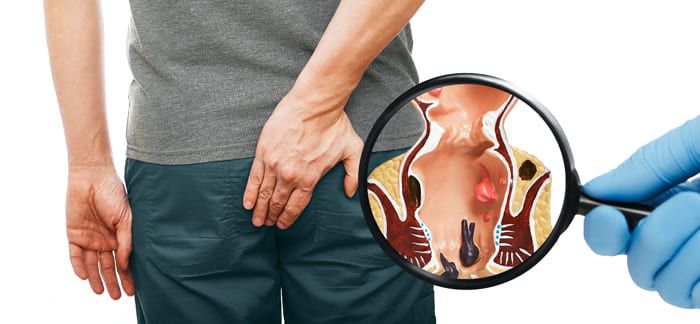 Health & Wellness
Health & WellnessWhat Causes External Hemorrhoids?
-
 Travel
TravelMust-See Attractions in Las Vegas
-
 Travel
TravelComprehensive Plans for Your Dream Vacation to Disneyland California
-
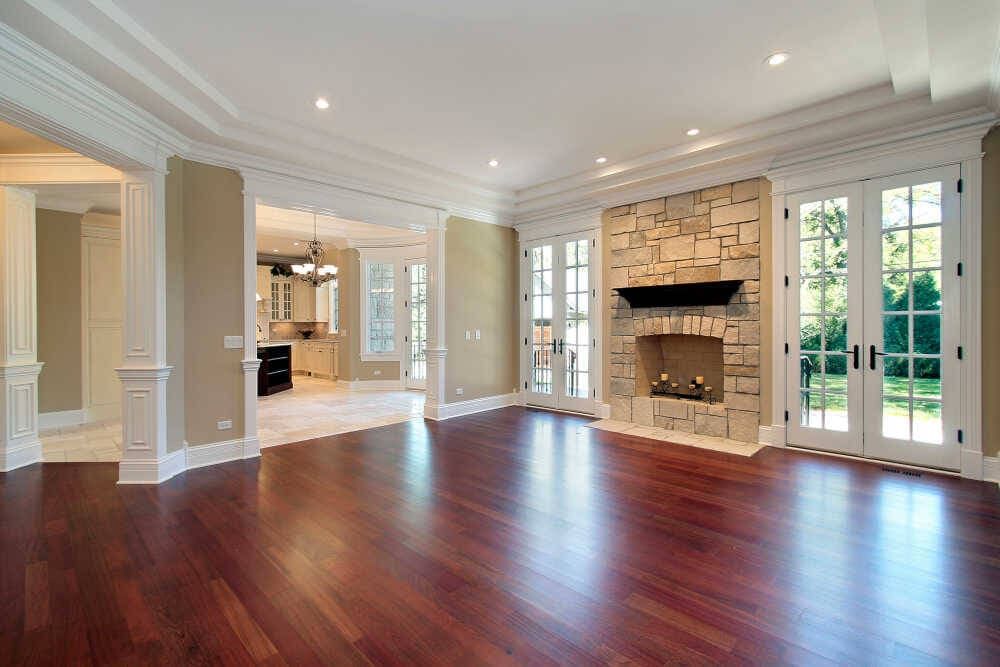 Home & Garden
Home & GardenBenefits of Wooden Flooring: Why Every Family Loves It
-
 Travel
TravelLast-Minute Vacations at the Best Prices
-
 Automotive
AutomotiveLaFerrari vs Ferrari Enzo: A Clash of Generations in Ferrari’s Masterpieces






